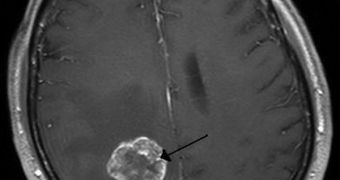Scientists recently developed a new treatment for preventing the recurrence of glioblastoma, which is one of the most invasive and common forms of brain cancer.
The condition is usually fatal within months of diagnostics, and it has a fairly large recurrence rate. In other words, even after initial treatment, people can still experience a relapse.
Now, thanks to efforts by specialists in the University of Massachusetts Medical School (UMMS), we may have a new way of addressing this aggressive brain tumor.
“Glioblastomas are horrendous tumors, and new therapies are desperately needed,” explains investigator Alonzo H. Ross, PhD, the lead researcher on the investigation.
The expert holds an appointment as a professor of biochemistry and molecular pharmacology at the UMMS, AACR News reports.
“We found that this double therapy of combining temozolomide with a Notch inhibitor was highly effective at treating tumor cells in culture and in mice,” the expert adds.
Additional details of the research appear in the September issue of the esteemed scientific journal Cancer Research, which is published by the American Association for Cancer Research (AACR).
“We’re both very successful and unsuccessful with cancer therapy; in most cases we can substantially diminish the tumor mass. The problem is that it comes back with vengeance, and is even more resistant and difficult to treat,” Ross argues.
At this point, the most common methods of addressing glioblastoma is via a combination of surgery, radiotherapy and chemotherapy. Even after these therapies, survival rates are poor, and recurrence rates high.
“Temozolomide is a chemotherapy drug of choice for glioblastomas, and the results of our preclinical study represent a potential promising new approach to combat an extremely difficult tumor,” Ross adds.
“The effect of the two together is very dramatic,” the expert adds, referring to a combination of radiation therapy and the chemotherapy drug.
“These results help lay the groundwork for future clinical research and are yet another stepping stone towards a future era dominated by ‘precision therapeutics’ designed to specifically target the underlying molecular drivers of cancer growth and spread,” explains Patrick M. O’Connor, PhD.
He holds an appointment as a chief scientific officer at Selexagen Therapeutics, and is also an editorial board member for Cancer Research.

 14 DAY TRIAL //
14 DAY TRIAL //